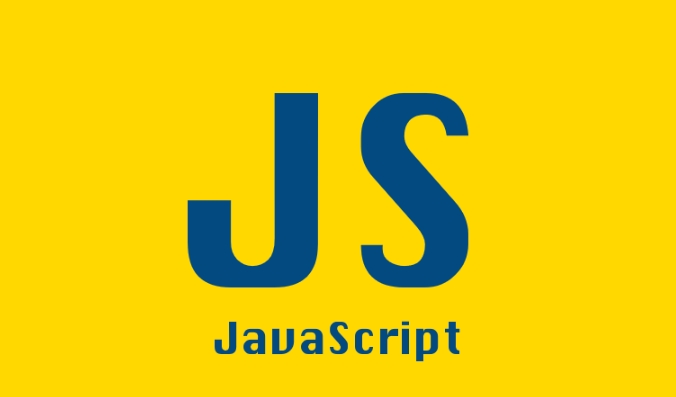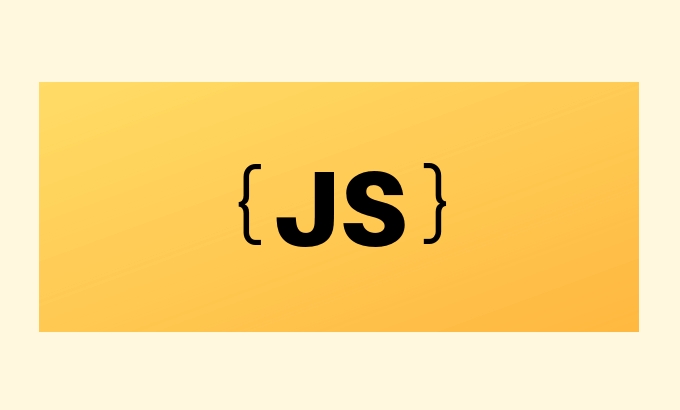JavaScript CSS-in-JS Libraries (Styled Components, Emotion)
Jul 22, 2025 am 03:11 AMCSS-in-JS improves maintainability by combining styles with component logic. 1. Its core advantage is scope isolation and avoid style conflicts; 2. It supports dynamic styles and directly modify styles based on props; 3. It has good integration with React and is suitable for component development. Styled Components is easier to use and mature in the ecosystem; Emotion is more flexible, supports object syntax and has good performance optimization. When using it, you need to pay attention to the style loading order, debugging complexity and performance considerations, but it is still practical in modern React projects.

Writing CSS in JavaScript sounds a bit strange, but that's the core philosophy of CSS-in-JS. It brings styles and component logic closer together, improving maintainability, especially in large projects. If you are considering using libraries like Styled Components or Emotion, you've realized the limitations of traditional CSS management.

Why choose CSS-in-JS?
One of the biggest advantages of CSS-in-JS is scope isolation . One of the most troublesome problems with traditional CSS is style conflict, especially in projects that are collaborative with multiple people. After using these libraries, the styles of each component are local by default, and there is no need to rack your brain to think about class name prefixes.
Another benefit is that dynamic style support is better . For example, if you want to change the button color according to props, use traditional CSS, you have to use data-attr or write a bunch of extra classes, and use Styled Components or Emotion to access props directly in the style.

In addition, they can integrate well with React, making the development experience smooth, especially suitable for component development models.
What is the difference between Styled Components and Emotion?
Both libraries implement the core functionality of CSS-in-JS, but differ in details.

- Styled Components pays more attention to "out of the box", has API friendly, a mature community ecosystem, and good debugging tools.
- The Emotion function is more flexible, supports object style writing, and is compatible with the styled API, and is doing a good job in performance optimization.
From the perspective of the learning curve, Styled Components is easier to get started; while Emotion provides more underlying controls, suitable for projects with specific needs.
Also, both do a good job with SSR (server-side rendering) support, but Emotion may require additional settings under certain build configurations.
How to get started?
No matter which library it is, the basic idea is the same: create a component with style.
Take Styled Components as an example:
import styled from 'styled-components';
const Button = styled.button`
background: ${props => props.primary ? 'blue' : 'gray'};
color: white;
padding: 10px 20px;
`;
function App() {
return <Button primary>Submit</Button>;
} The Emotion is written in a similar way, and you can also use the @emotion/styled package to obtain a similar API:
import styled from '@emotion/styled';
const Button = styled.button`
background: ${props => props.primary ? 'blue' : 'gray'};
`;
function App() {
return <Button primary>Submit</Button>;
}If you want to use object syntax, Emotion also supports:
const Box = styled.div({
padding: 20,
backgroundColor: 'lightblue'
});A few notable points
- Style loading order issue : Sometimes multiple styled component styles will overwrite each other, especially when using global themes, pay attention to the order of introduction.
- Debugging style : The class names seen by browser developer tools are automatically generated and may be less intuitive. However, most libraries have devtools plug-in that can assist in debugging.
- Performance considerations : Although the performance is good enough in most cases, if you frequently switch a large number of styles, it is recommended to make some optimizations, such as avoiding the generation of new objects in render.
- Topic Management : Both libraries support providing topic variables through React Context, and using them reasonably can reduce duplicate code.
Basically that's it. CSS-in-JS is not a silver bullet, but it does solve some of the pain points of traditional CSS, especially for modern React projects, which is a very practical choice.
The above is the detailed content of JavaScript CSS-in-JS Libraries (Styled Components, Emotion). For more information, please follow other related articles on the PHP Chinese website!

Hot AI Tools

Undress AI Tool
Undress images for free

Undresser.AI Undress
AI-powered app for creating realistic nude photos

AI Clothes Remover
Online AI tool for removing clothes from photos.

Clothoff.io
AI clothes remover

Video Face Swap
Swap faces in any video effortlessly with our completely free AI face swap tool!

Hot Article

Hot Tools

Notepad++7.3.1
Easy-to-use and free code editor

SublimeText3 Chinese version
Chinese version, very easy to use

Zend Studio 13.0.1
Powerful PHP integrated development environment

Dreamweaver CS6
Visual web development tools

SublimeText3 Mac version
God-level code editing software (SublimeText3)
 How to make an HTTP request in Node.js?
Jul 13, 2025 am 02:18 AM
How to make an HTTP request in Node.js?
Jul 13, 2025 am 02:18 AM
There are three common ways to initiate HTTP requests in Node.js: use built-in modules, axios, and node-fetch. 1. Use the built-in http/https module without dependencies, which is suitable for basic scenarios, but requires manual processing of data stitching and error monitoring, such as using https.get() to obtain data or send POST requests through .write(); 2.axios is a third-party library based on Promise. It has concise syntax and powerful functions, supports async/await, automatic JSON conversion, interceptor, etc. It is recommended to simplify asynchronous request operations; 3.node-fetch provides a style similar to browser fetch, based on Promise and simple syntax
 JavaScript Data Types: Primitive vs Reference
Jul 13, 2025 am 02:43 AM
JavaScript Data Types: Primitive vs Reference
Jul 13, 2025 am 02:43 AM
JavaScript data types are divided into primitive types and reference types. Primitive types include string, number, boolean, null, undefined, and symbol. The values are immutable and copies are copied when assigning values, so they do not affect each other; reference types such as objects, arrays and functions store memory addresses, and variables pointing to the same object will affect each other. Typeof and instanceof can be used to determine types, but pay attention to the historical issues of typeofnull. Understanding these two types of differences can help write more stable and reliable code.
 React vs Angular vs Vue: which js framework is best?
Jul 05, 2025 am 02:24 AM
React vs Angular vs Vue: which js framework is best?
Jul 05, 2025 am 02:24 AM
Which JavaScript framework is the best choice? The answer is to choose the most suitable one according to your needs. 1.React is flexible and free, suitable for medium and large projects that require high customization and team architecture capabilities; 2. Angular provides complete solutions, suitable for enterprise-level applications and long-term maintenance; 3. Vue is easy to use, suitable for small and medium-sized projects or rapid development. In addition, whether there is an existing technology stack, team size, project life cycle and whether SSR is needed are also important factors in choosing a framework. In short, there is no absolutely the best framework, the best choice is the one that suits your needs.
 JavaScript time object, someone builds an eactexe, faster website on Google Chrome, etc.
Jul 08, 2025 pm 02:27 PM
JavaScript time object, someone builds an eactexe, faster website on Google Chrome, etc.
Jul 08, 2025 pm 02:27 PM
Hello, JavaScript developers! Welcome to this week's JavaScript news! This week we will focus on: Oracle's trademark dispute with Deno, new JavaScript time objects are supported by browsers, Google Chrome updates, and some powerful developer tools. Let's get started! Oracle's trademark dispute with Deno Oracle's attempt to register a "JavaScript" trademark has caused controversy. Ryan Dahl, the creator of Node.js and Deno, has filed a petition to cancel the trademark, and he believes that JavaScript is an open standard and should not be used by Oracle
 What is the cache API and how is it used with Service Workers?
Jul 08, 2025 am 02:43 AM
What is the cache API and how is it used with Service Workers?
Jul 08, 2025 am 02:43 AM
CacheAPI is a tool provided by the browser to cache network requests, which is often used in conjunction with ServiceWorker to improve website performance and offline experience. 1. It allows developers to manually store resources such as scripts, style sheets, pictures, etc.; 2. It can match cache responses according to requests; 3. It supports deleting specific caches or clearing the entire cache; 4. It can implement cache priority or network priority strategies through ServiceWorker listening to fetch events; 5. It is often used for offline support, speed up repeated access speed, preloading key resources and background update content; 6. When using it, you need to pay attention to cache version control, storage restrictions and the difference from HTTP caching mechanism.
 Handling Promises: Chaining, Error Handling, and Promise Combinators in JavaScript
Jul 08, 2025 am 02:40 AM
Handling Promises: Chaining, Error Handling, and Promise Combinators in JavaScript
Jul 08, 2025 am 02:40 AM
Promise is the core mechanism for handling asynchronous operations in JavaScript. Understanding chain calls, error handling and combiners is the key to mastering their applications. 1. The chain call returns a new Promise through .then() to realize asynchronous process concatenation. Each .then() receives the previous result and can return a value or a Promise; 2. Error handling should use .catch() to catch exceptions to avoid silent failures, and can return the default value in catch to continue the process; 3. Combinators such as Promise.all() (successfully successful only after all success), Promise.race() (the first completion is returned) and Promise.allSettled() (waiting for all completions)
 Leveraging Array.prototype Methods for Data Manipulation in JavaScript
Jul 06, 2025 am 02:36 AM
Leveraging Array.prototype Methods for Data Manipulation in JavaScript
Jul 06, 2025 am 02:36 AM
JavaScript array built-in methods such as .map(), .filter() and .reduce() can simplify data processing; 1) .map() is used to convert elements one to one to generate new arrays; 2) .filter() is used to filter elements by condition; 3) .reduce() is used to aggregate data as a single value; misuse should be avoided when used, resulting in side effects or performance problems.
 JS roundup: a deep dive into the JavaScript event loop
Jul 08, 2025 am 02:24 AM
JS roundup: a deep dive into the JavaScript event loop
Jul 08, 2025 am 02:24 AM
JavaScript's event loop manages asynchronous operations by coordinating call stacks, WebAPIs, and task queues. 1. The call stack executes synchronous code, and when encountering asynchronous tasks, it is handed over to WebAPI for processing; 2. After the WebAPI completes the task in the background, it puts the callback into the corresponding queue (macro task or micro task); 3. The event loop checks whether the call stack is empty. If it is empty, the callback is taken out from the queue and pushed into the call stack for execution; 4. Micro tasks (such as Promise.then) take precedence over macro tasks (such as setTimeout); 5. Understanding the event loop helps to avoid blocking the main thread and optimize the code execution order.






